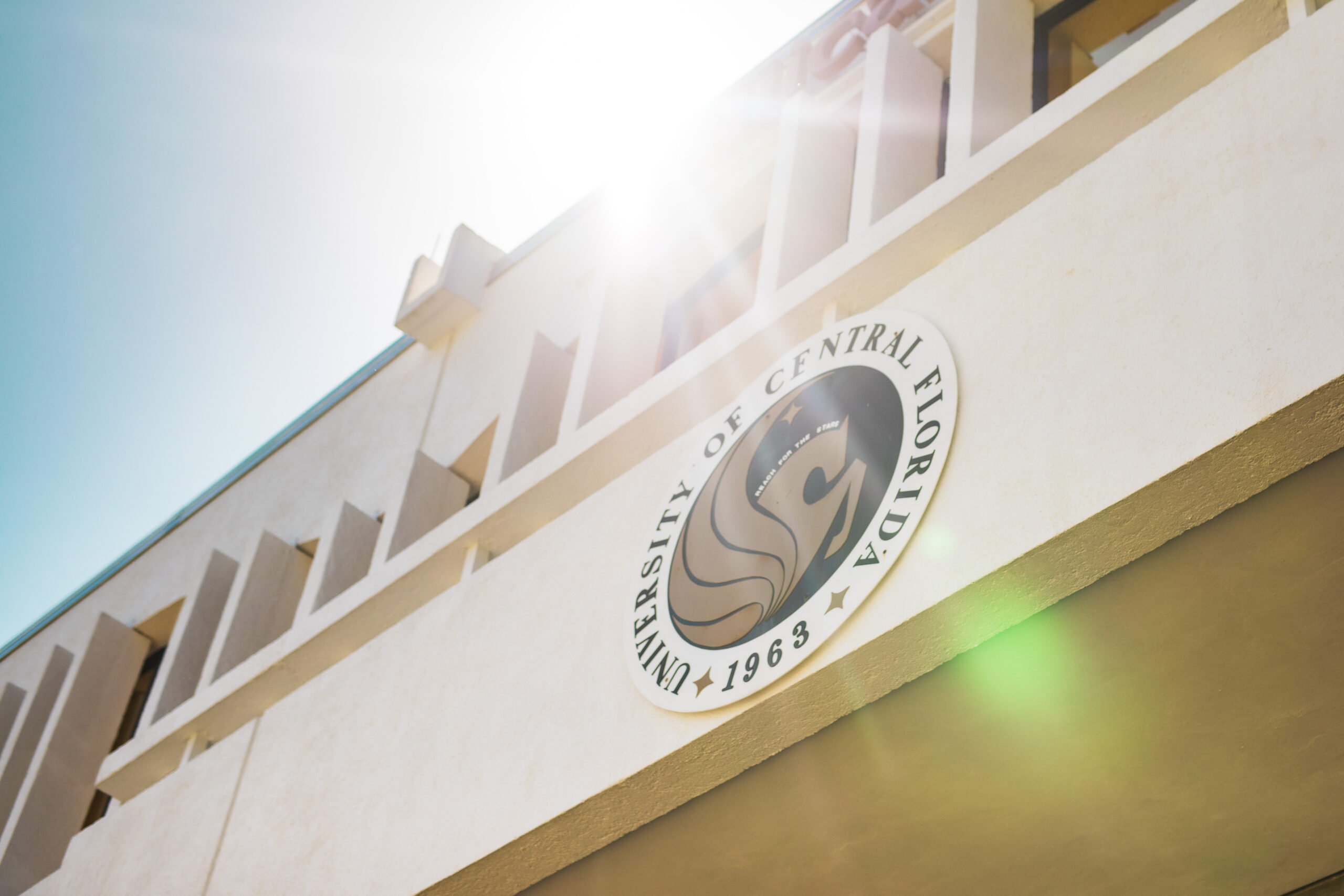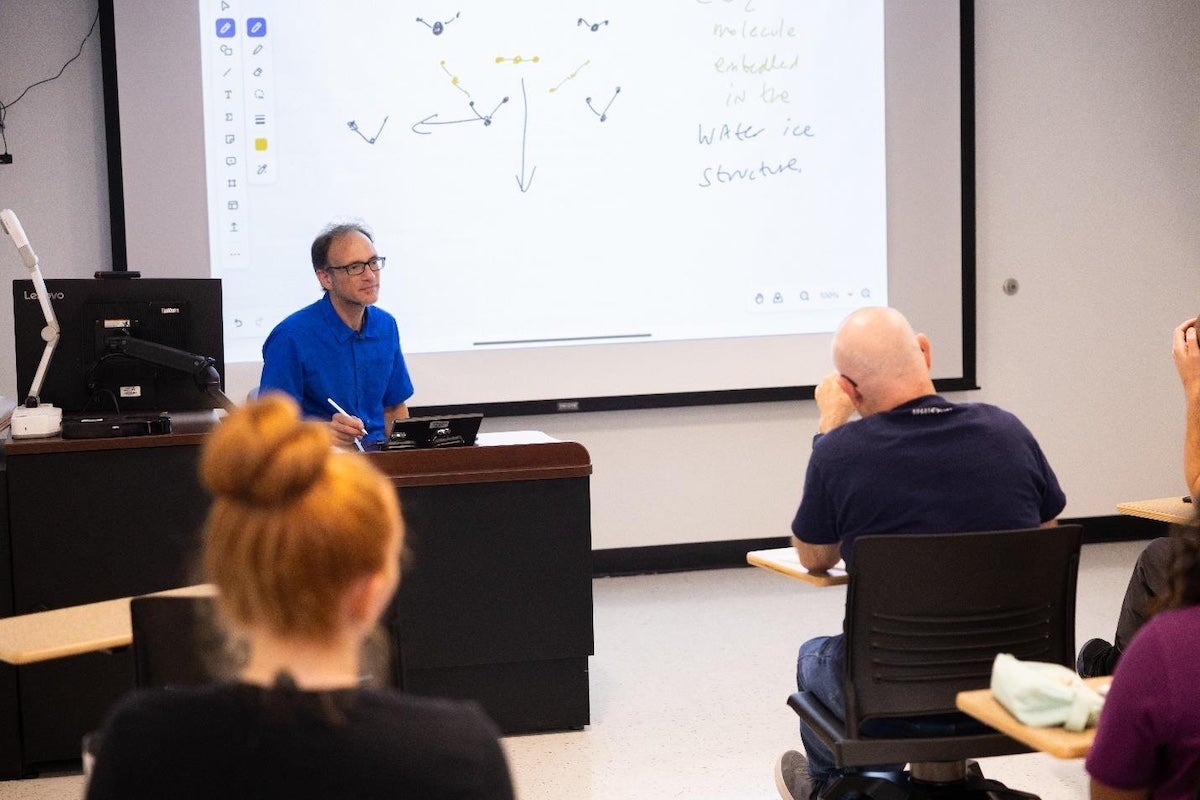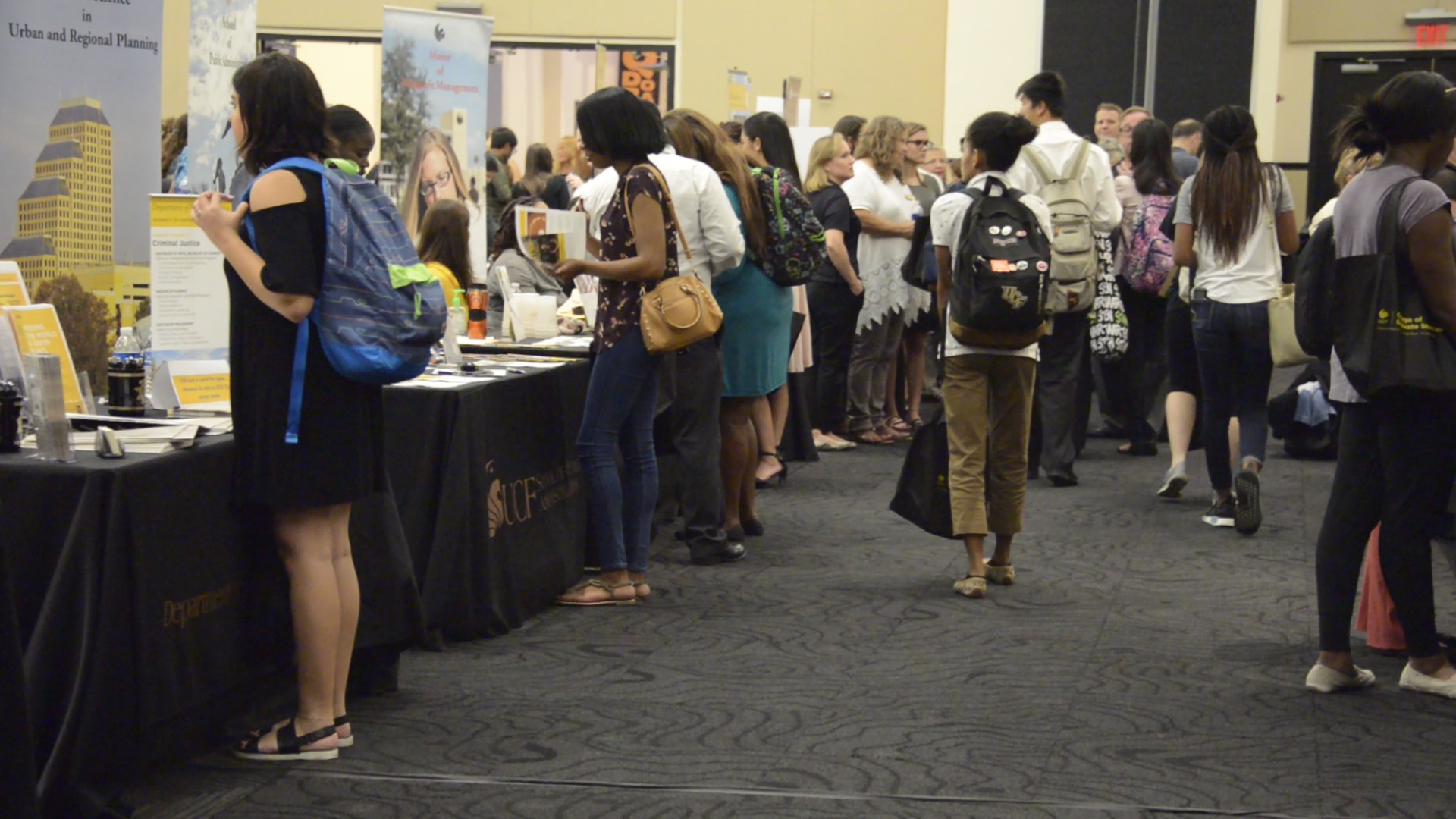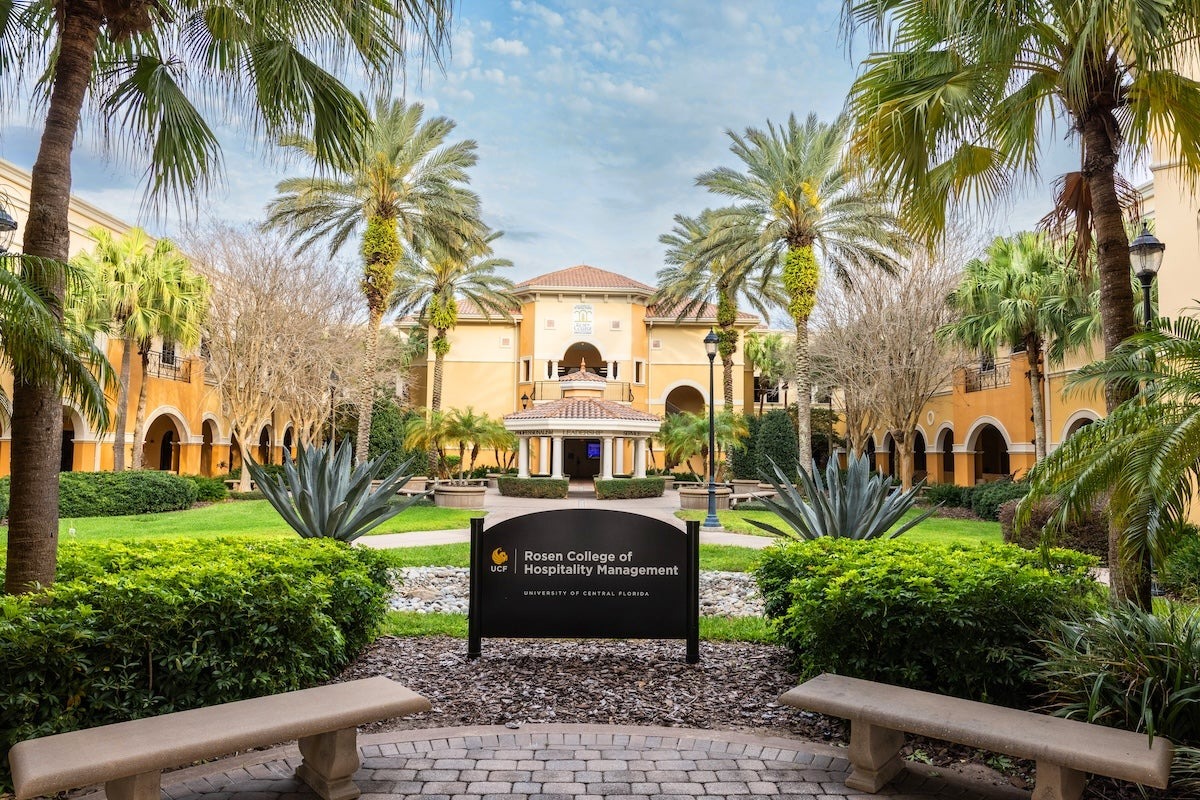First Crewed Launch from U.S Soil in Almost a Decade Rallies Pioneering American Spirit
The Space X mission scheduled for May 27 has captured the nation’s imagination because it is the first launch from U.S. soil to carry astronauts into space since the Space Shuttle Program ended in 2011.
American astronauts have hitched rides to the International Space Station aboard Soyuz capsules in partnership with the Russian space program since then. All those missions are launched out of Kazakhstan, says Amy Foster, an UCF associate professor who specializes in space history.

“Since the Mercury Project and then President Kennedy’s commitment to putting a man on the moon by the end of the decade, the space program has been a source of pride, fascination, and awe for many Americans,” Foster says. “As much as we have learned from robotics in space, there is nothing we have that can replace the curiosity and ingenuity of the human brain. That’s why sending people into space to explore what is out there is so important. Being able to launch from American soil again means we have the capability to push our exploration of the Solar System further. Our next step is a return to the moon and then on to Mars. And that’s inspiring.”
The launch has been years in the making with private companies conducting many tests and sustaining several public setbacks amid a new landscape of social media and the 24-hour news cycle. The timing is unique for another reason. Lift-off is set amid a worldwide pandemic that has restricted the movement of most Americans for weeks.
“On a local level, the return to flight also promotes economic growth,” Foster says. “While tourism is limited at the moment given the concerns about travel and physical distancing, I expect the economic impact won’t be felt just yet,” Foster says. “But as NASA’s initiatives take flight along with more successes within private industry’s space endeavors, that economic impact should be felt in the coming years.”
It’s a perfect time for good news and for hope, say several UCF faculty and alumni with ties to the space industry. UCF’s history is linked to the Space Coast, where NASA launched the first man to land on the moon from more than 50 years ago. Since then UCF has been supporting the space initiative through research and the training of engineers and scientists who continue to contribute to the exploration of the solar system and beyond.
Yan Fernandez
Professor of Physics and Astronomy
Director of the UCF Robinson Observatory
Principal Investigator on the Arecibo Observatory Project

Yan Fernandez is planning a virtual zoom watch party for the launch because he will be practicing social distancing. Like many, Fernandez is eager to see the crewed flights return to action. Although NASA conducts robotic missions that provide scientists with useful information, the crewed flights could mean more instruments like the Hubble Telescope may make it into space sooner, which would benefit Fernandez’s research in the areas of comets and asteroids.
“I like to watch any launch from Canaveral, but certainly having a crewed launch is special since it’s been so long since we’ve been able to see one locally” he says. “I think it may be especially significant for Central Florida since watching people launch into space has been part of our local culture for so long. For a lot of people crewed flight is what they think of when they think of the space program, even though NASA does so much great work with robots. So, there’s potentially some extra excitement from getting ‘back’ to doing this. This would be some really positive news during what is a really difficult time for so many people.”
Joshua Colwell
Professor of Physics
Deputy Director of the Florida Space Institute

Colwell has been a part of several NASA missions. Colwell’s experiments aimed at understanding planet formation have flown aboard the space shuttle and the International Space Station, and several have also flown on commercial spacecraft such as Blue Origin’s New Shepard and Virgin Galactic’s SpaceShipTwo. He also created and launched the Walk About the Galaxy podcast and is a frequent guest of WMFE’s space-themed radio show Are We There Yet?
“It’s an interesting flight not just because it’s the return of flying U.S. astronauts from the U.S., but it’s on a vehicle for hire rather than a NASA vehicle. Even the spacesuits look, well, different. So, it will in some ways mark the beginning of a new style of human spaceflight where NASA is not the only entity taking people into orbit. We are also close to that with Blue Origin and Virgin Galactic for short suborbital flights as well. They probably would have been flying passengers this year if not for COVID-19.”
Colwell is eager to see how the flight goes and will be watching from his Orlando home.
“From what I understand of the flight, it is virtually 100 percent automated, so the astronauts, while trained on manual procedures to operate the Crew Dragon, are primarily just getting a ride to the ISS where they will do their real work. If all goes according to plan, Crew Dragon is going to act like a self-driving Uber and the astronauts are just getting a ride to ISS.”
Adrienne Dove
Assistant Professor of Physics
Deputy Principal Investigator of NASA’s Center for Lunar and Asteroid Surface Science at UCF
Dove studies planetary surface processes and dusty plasmas. Her work has flown aboard multiple private and public spacecraft and one of her experiments is currently at the International Space Station. In 2017 Dove was awarded the Susan Niebur Award Early Career Award by the NASA Solar System Exploration Virtual Research Institute (SSERVI) for her contributions to the science and exploration communities. She’s also a cohost of the Walk About the Galaxy podcast and a frequent guest of WMFE’s space-themed radio show Are We There Yet? She plans to watch the launch from Cape Canaveral if she can find a way to do it while physical distancing. If not, she will watch it from Orlando.

“This specific launch doesn’t directly affect my research too much,” Dove says. “However, I conduct research on the ISS, and the return to orbital flight for the U.S. has the promise of increased flights to the ISS. A lot of payloads get up there via cargo vehicles, but you still need astronauts to install and often operate them. I hope that success indicates the restart of a more frequent launch schedule and more routine access for humans to space. It’s also great because, as we’re ramping up to go back to the moon, it will be good to have more practice with these procedures and more astronauts who have experienced space travel.”
Dove is also a space trivia fan and she’s excited to see Space X’s nod to a bit of NASA history.
“The NASA ‘worm logo’ appears on the SpaceX rocket and on the astronauts’ suits — this logo was actually retired in the early ’90s, and has been a rare find ever since. It’s fun to see it back again.”
Tracy Becker ’16PhD
Planetary Scientist
Group Lead at the Southwest Research Institute
Tracy Becker earned her PhD in physics with a focus on planetary sciences from UCF. While here, she watched several space shuttle flights. In her job at SwRI in Texas, she uses the Hubble Space Telescope, to study the composition of moons, rings, and asteroids in the Solar System. She also uses radar data from the UCF managed Arecibo Observatory in Puerto Rico to determine the shape and structure of near-Earth asteroids. Becker is also part of NASA’s Europa Clipper mission, which will help determine the habitability of the ocean that lies underneath the icy shell of Jupiter’s moon, Europa.

“It is great to once again have the ability to launch astronauts from the U.S., using U.S. rockets,” Becker says. “This launch is generating renewed excitement about the U.S. Space Program, and that is very important to me as a scientist. I want everyone to be just as inspired and excited by the technological achievements of our country and the resulting prospects for future space exploration as I am.”
NASA conducts numerous robotic missions, which benefits scientists looking to put experiments in space or that carry instruments needed to continue research from the ground on Earth.
“While we continue to partner with countries around the globe to investigate the universe with powerful telescopes and exciting spacecraft missions, there is something special about human exploration. Even though U.S. astronauts have continued to go to the Space Station over the last 10 years, I think having the capability to use U.S. rockets to launch crewed missions represents the next step in the future of human exploration. This launch not only signals the continued commitment of the U.S. to human exploration, but also the importance of partnerships between NASA and private companies like SpaceX. I think this launch is just the first step towards a new future of human space exploration.”
Dan Britt
Professor of Physics
Director of NASA’s Center for Lunar and Asteroid Surface Science at UCF

Professor Britt is a geologist and astrophysicist at UCF. He’s been part of multiple NASA missions in the past is currently a member of the New Horizons mission that made its way to Pluto and is now in the Kuiper Belt. He is also a member of the Lucy mission to explore six primitive asteroids. The mission is scheduled to launch next year from Kennedy Space Center.
As head of CLASS, much of his research work and those of his lab are focused on the moon and asteroids. He plans to watch the launch from his home in Central Florida.
“The public loves launching humans,” Britt says. “It’s much more interesting than robots. This is a major step forward to getting humans back to the moon. My work on lunar regolith and simulants will be highly relevant to this objective. SpaceX has revolutionized the launch business by reducing costs. Low launch costs, opens a huge range of potential commercial and scientific projects. This will greatly increase the speed of exploration and access to space for a range of activities.”
Share This Article

UCF Women’s Club Honors 3 Graduate Students with Prestigious Sheila B. Somerville Scholarship
Financial support is often the cornerstone of academic success, and for many students, scholarships open the door to higher education. Beyond easing financial stress, these awards provide recognition, motivation, and a...
Latest News

UCF Launches 1st Planetary and Space Sciences PhD Program in Florida
As SpaceU, UCF is pushing the boundaries of exploration by launching a groundbreaking new doctoral program in the planetary and space sciences. Now, aspiring researchers can apply to the inaugural cohort of...

UCF Fulbright Awardees Bring Their Passions to a Global Scale
Each year, the Fulbright Program offers opportunities for American students to conduct research, teach English, or pursue graduate study abroad. One of the most prestigious international exchange programs in the...

Unleash Opportunities with a UCF Graduate Degree
A graduate degree has the power to unleash opportunities by expanding careers, opening doors to new fields, and increasing lifetime earnings. According to the U.S. Bureau of Labor Statistics (2024),...

UCF Rosen College Ranks No. 1 in the World for Hospitality Education for 2025
One of the most anticipated theme parks in the world is about to open its gates — and right next door, the No. 1 hospitality and hotel management school on...